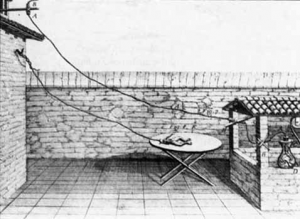
It was in the eighteenth century when Luigi Galvani discovered that a frog’s legs could be made to twitch in an electric field. A dead frog, no less. It is said that the discovery was accidental, that Galvani and his assistant were using frog skin to experiment with static electricity when a charged scalpel made contact with the exposed sciatic nerve of a recently skinned frog. As to what happened next, I will quote directly from Wikipedia, because the phrasing is just too perfect:
“At that moment, they saw sparks and the dead frog’s leg kicked as if in life.”
What a sentence! The first sentient being to be galvanized–a dead frog in 1771!
Well here I am—a human being and very much alive—inspired by the boldness of the number “1,” by the ring of the word “galvanized,” and by the fresh coffee straight from my brand new French press. Is it yet another fleeting swell of the flame caused by nothing more than some excess static charge in the air? Maybe so. But why not forge what we can while the flame is high?

